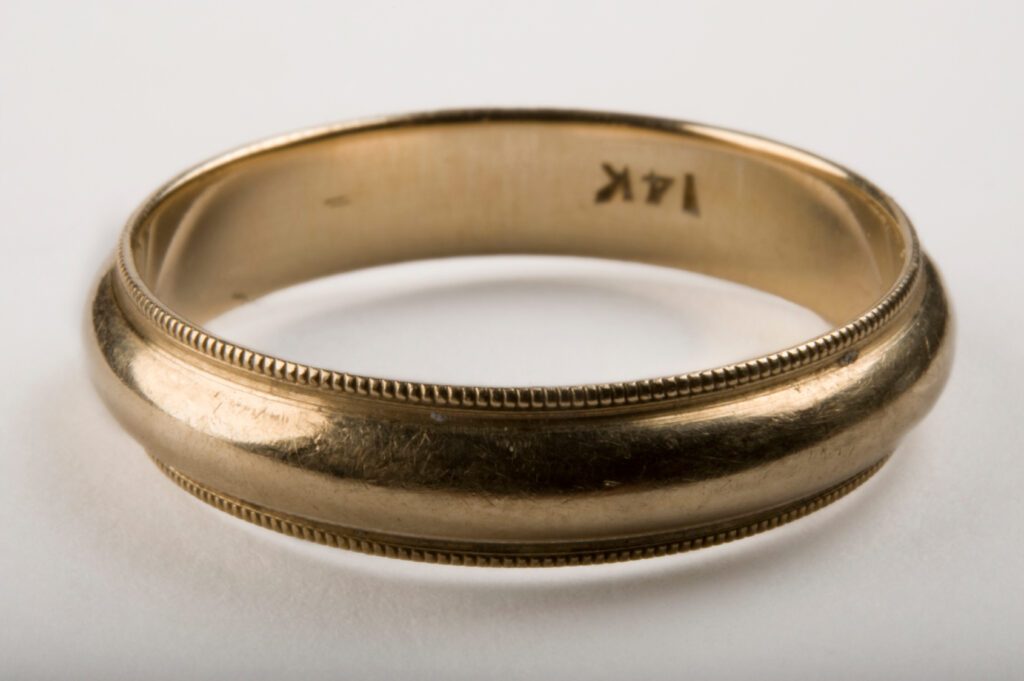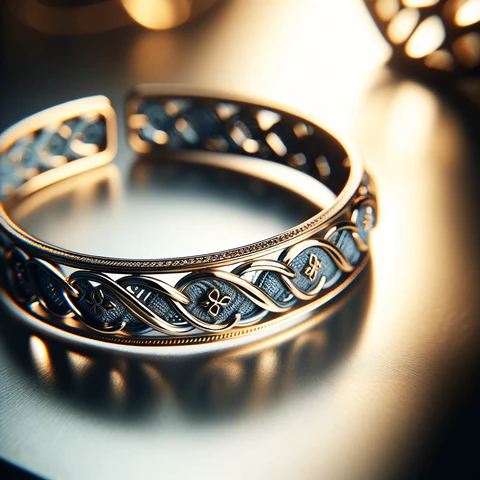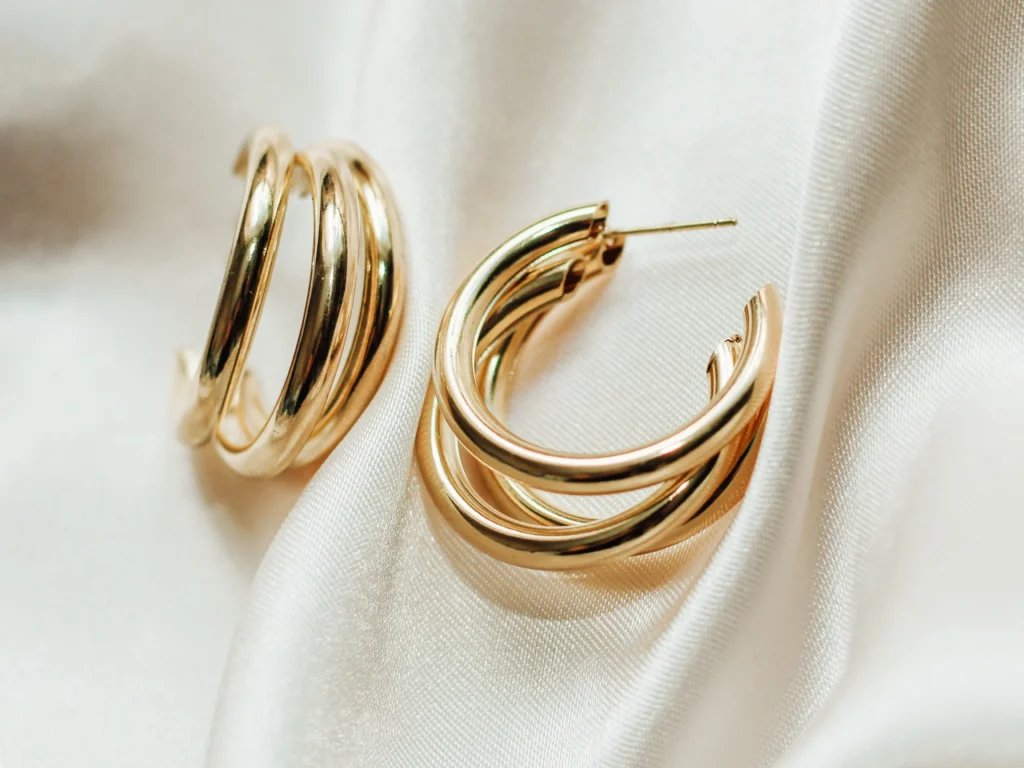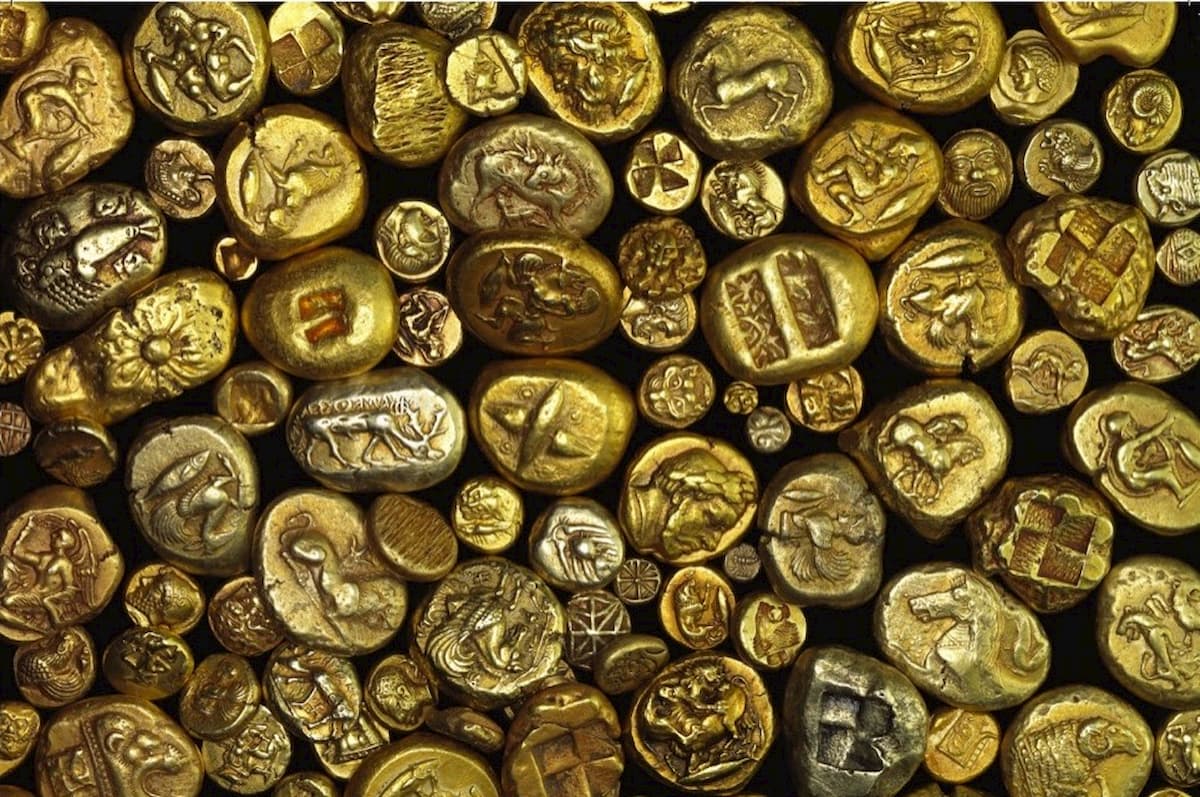Chances are you’ve heard the term “14 karat gold” in reference to gold jewelry. But what exactly is 14 karat gold? How can you tell if your jewelry is 14 karat gold? How much is it worth, and are certain types of 14k jewelry more valuable than others? Let’s find out.

Karats and Purity
First thing’s first – a quick rundown on karats. A karat is a unit of measurement used to indicate the amount of gold in an item, often abbreviated as “k” or “kt.” Pure gold is 24 karats, or 24 parts gold out of a total of 24 parts. Lower karat numbers mean that an item has a lower proportion of gold, with the remaining material comprised of other metals. For example, 14 karat gold is 14 parts gold out of 24 parts, which is 58.3% pure gold.
14k gold is very popular and widely utilized in the jewelry industry, prized for its versatility, durability, and beauty. 14k gold items are relatively affordable compared to their 18k and 24k counterparts, yet still quite attractive and sturdy, great for everyday wear.
So if 14k is 58.3% gold, what makes up the other 41.7%? Other metals that are often alloyed (mixed) with pure gold in jewelry making include copper, silver, nickel, palladium, platinum, zinc and even aluminum. Incorporating these non-gold metals helps make 14k items strong, resilient, and resistant to scratching.
White Gold
White gold has a silver-colored appearance and is made of pure gold mixed with other white metals such as nickel, palladium, or silver. Sometimes a thin layer of rhodium is also added to enhance the white color and durability. White gold became popular in the early 20th century as a substitute for platinum, which was scarce and expensive at the time. (Platinum is still scarce today, rarer than gold or silver!) White gold is popular for engagement rings, wedding bands, earrings, men’s jewelry and more.
Rose Gold
Rose gold, also known as pink gold or red gold, is a gold alloy distinguished by its pinkish or reddish hue. Pure gold is alloyed with copper and sometimes a small amount of silver to create rose gold. The copper creates the distinctive color; the higher the copper content, the deeper the reddish tone. Rose gold has gained popularity in recent years for its romantic and vintage aesthetic, and is often used in engagement rings, wedding bands, bracelets, and watches.
Yellow Gold
Yellow gold maintains the natural color of gold, a warm yellowish hue. It’s typically made of pure gold combined with copper and/or silver. Yellow gold is a classic choice for jewelry, cherished for its timeless appeal and versatility.
Green Gold
Yes, green gold exists! Also known as electrum, green gold is a naturally occurring alloy of gold and silver with a greenish hue. The ratio of gold and silver varies, and the exact proportions will influence the color, which can range from a pale green to a more intense shade. Green gold is relatively rare and has been used throughout history in jewelry making, particularly in ancient civilizations like the Egyptians and Greeks. Green gold is still occasionally used in jewelry for its unique color, but it’s less common than white, rose and yellow gold alloys.

Other Unique Alloys: Blue and Purple Gold
Rare and unique, blue gold is alloyed with metals that create a bluish tint, such as iron, cobalt or aluminum. Blue gold may require special care to maintain its color and appearance.
Purple gold, also known as amethyst gold or violet gold, is an alloy of gold and aluminum. It’s relatively stable and resistant to tarnishing. It has long been associated with royalty and luxury!
How Much is 14k Gold Worth?
So, is 14k white gold worth more than 14k rose, yellow or green gold? It depends on who you ask. Generally speaking, when comparing different 14k alloys, the value is pretty subjective. Each type of alloy should have the same amount of pure gold, while the amount of non-gold metals used are generally so low that the differences in their market values don’t make significant difference in the overall value when talking about a single piece.
Keep in mind that the retail value of 14k jewelry is probably different than the precious metal value (sometimes called the “scrap value” or material value). Retail and resale prices for a piece of jewelry will vary depending on who designed it, the intricacy of the design, how rare the item is, and the value of any non-metal components such as precious stones.
For example, a designer diamond ring will likely retail for more than an old 14k necklace or bracelet.
Gauging the Scrap Value
Calculating the approximate scrap value of an item is actually relatively straightforward. Here’s how – let’s take a 14k ring that weighs 4 grams for example.
- First, convert the item’s weight in grams to troy ounces: 4 grams = 0.128603 troy ounces
- Next, multiply the weight in troy ounces by the price of gold: 0.128603 x 2,035.05 = 261.71
- Lastly, find 58.3% of that number: 261.71 x .58 = 151.79
So a 14k ring that weighs 4 grams may be worth about $152.
A Note on Karats and Purity
Just remember, when it comes to the amount of pure gold in jewelry, each piece is one of a kind. Although “14k” indicates 58.3% gold purity, it does not guarantee that an item is exactly 58.3% pure gold.

There is always some margin for error in the manufacturing process, and jewelry makers will err on the side of using slightly less than 58.3% gold, as opposed to using more. Moreover, the weight of any precious metals used are not uniform, so it’s not completely an apples to apples comparison.
Big-name jewelers may have more consistency in their products, but there is no formal regulation in the jewelry industry to monitor the gold purity in items marked “14k.” The 14 karat marking is a great benchmark to indicate what you have, but it’s not the end-all be-all. Refining your jewelry is the only sure way to learn how much gold it contains. Garfield uses melt and assay techniques to determine the exact amount of gold in 14k items.
When selling gold jewelry, price is only one of multiple factors that you may want to consider. For example, speed of payment may also be important. If your priority is a quick and easy transaction, selling to a refinery like Garfield guarantees your payment in just a few days, as opposed to the weeks or even months it might take to consign your jewelry or find an individual buyer yourself. Our experts can help you figure out what your jewelry is worth and get you the highest payment!
Looking to sell your gold jewelry or accessories? Download a free shipping label today!
P.S. – If you enjoyed this post, you might also like ‘Karat vs. Carat’ and ‘What Do the Stamps on My Gold Jewelry Mean?’

